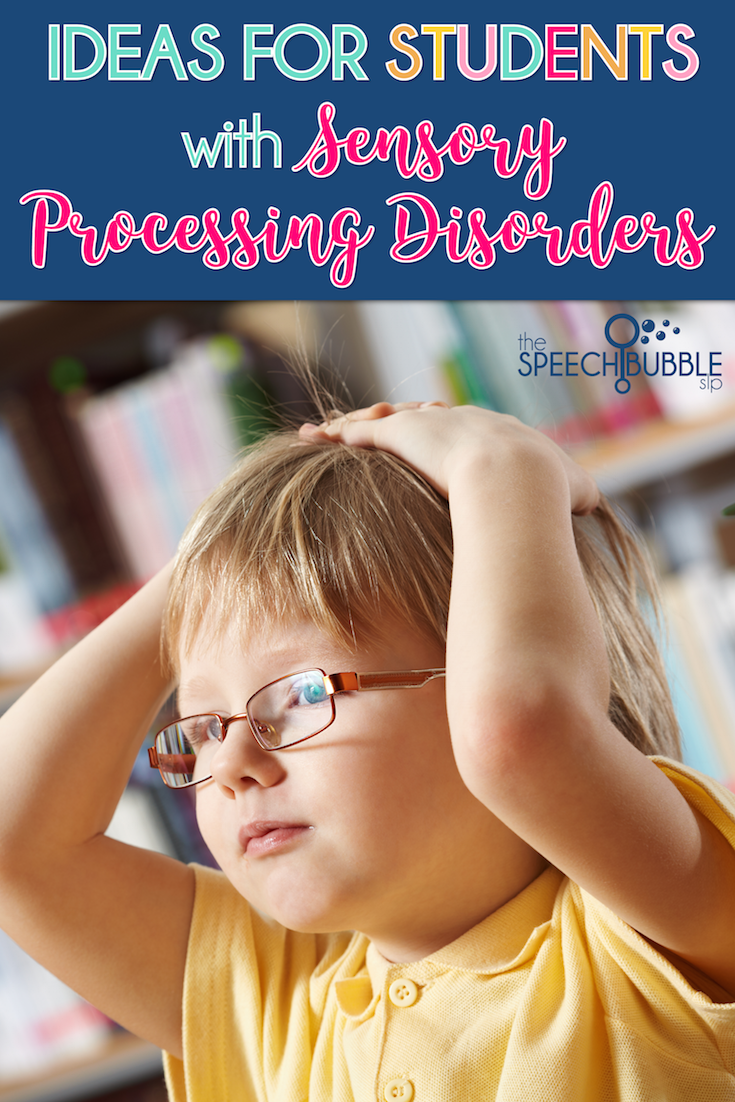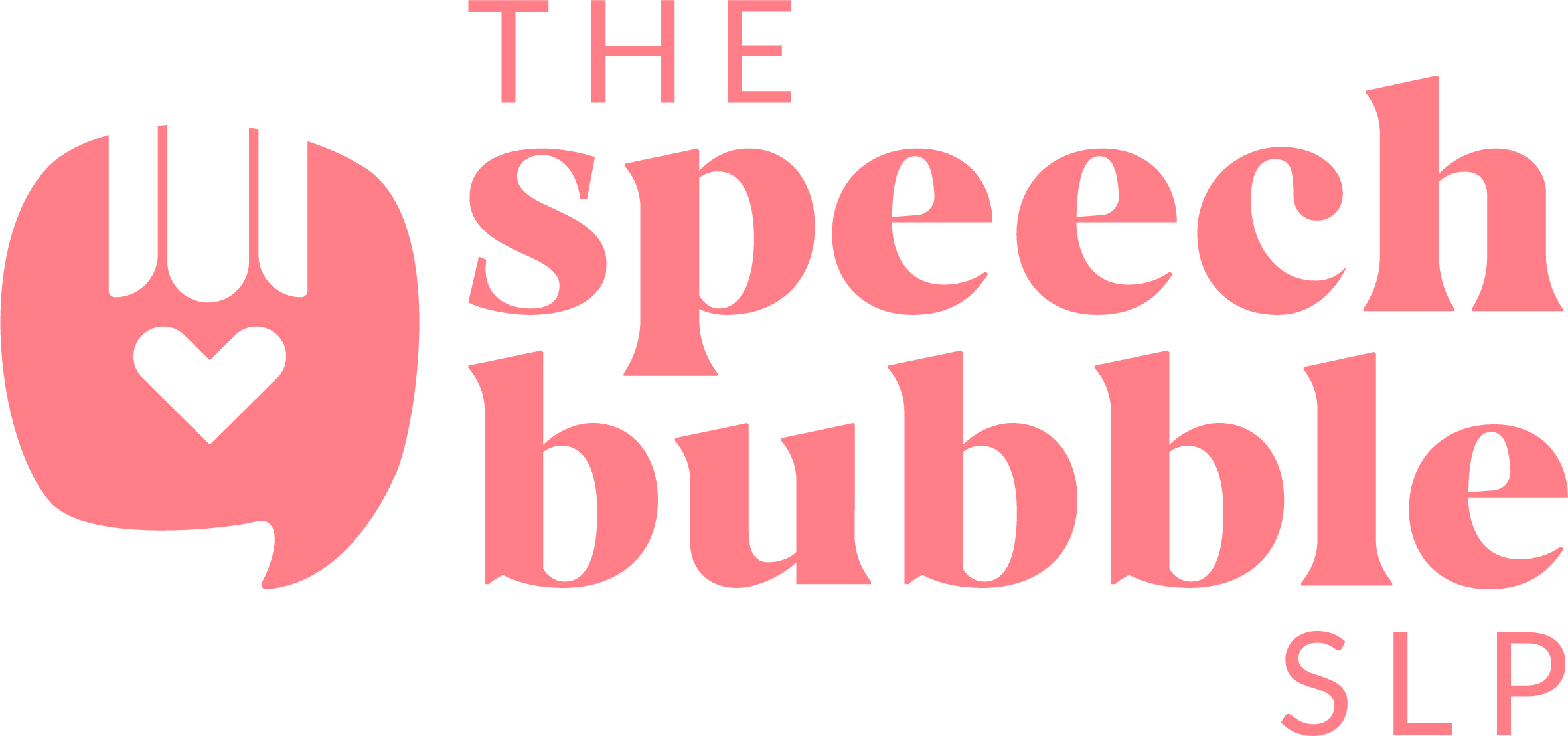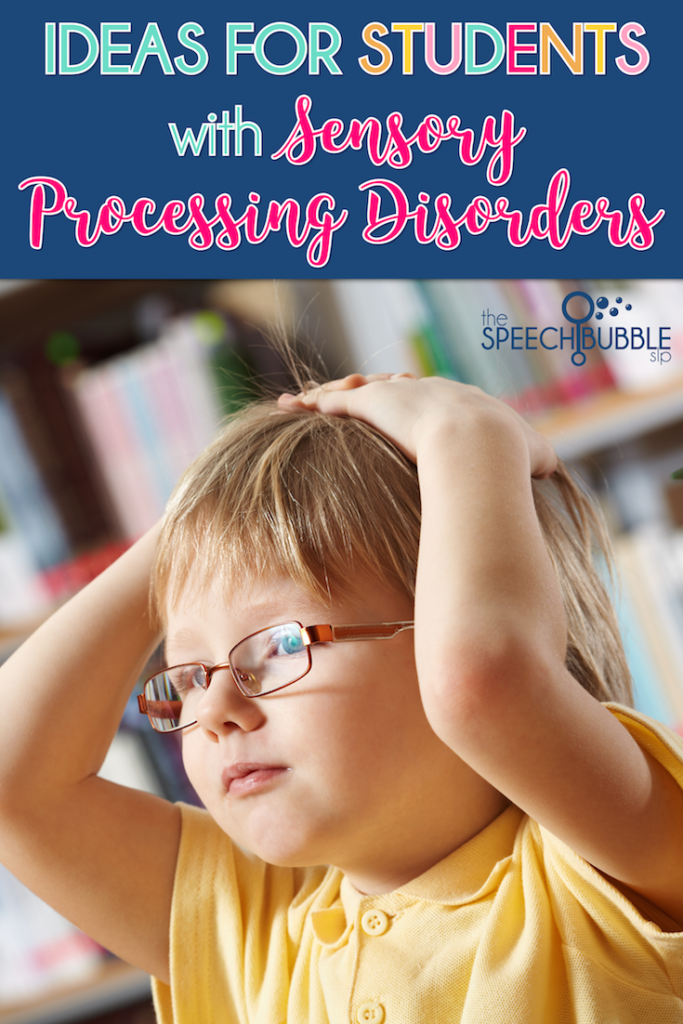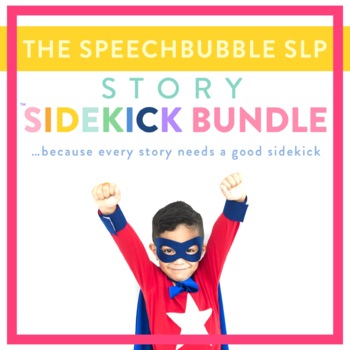I recently attended the ISHA conference and had the opportunity to attend a session about Sensory Processing Disorders ( SPD ) focusing on Sensory Integration. It was probably one of the most informative and engaging sessions I had every attended. This year, for me anyway, there was a drastic increase in the amount of students on my caseload with sensory needs. Some very minor, some much more drastic. Before I get into what we can do to help this kiddos, how about some helpful background info.

– Sensory Integration is the organization of sensations from the body and environment. This makes it possible for the body to move and function appropriatly and effectivityly within an environment.
– EVERYONE IS SENSORY PROCESSING ALL THE TIME! Every person at any given time is processing using their senses. A SPD exists when a person’s nervous system cannot organize sensory input into appropriate responses, creating a kind of sensory ‘traffic jam’. One sense may getting to much input and another not enough. This is when we see those ‘sensory seeking’ behaviors. The their body are reaching out to their environment to get that needed input.
– SPD can effect just one sense, touch, sight, smell or multiple senses. The effects observed by the students over responding or unders responding to sensation.
– Over responding or having a low threshold: Students who over respond to
sensations may act find simple things like the tag on the back of their shirt to be
unbearable.
– Under responding or having a high threshold: Students who under respond to
sensation may show no sign of awareness to the stimulant. These children may
stand outside in short sleeves on a 10 degree day and show no reaction to the cold
( this is an extreme example but you get the point ).
We all remember learning our 5 senses in school: smell, sight, touch, hearing, and taste. But there are 3 more lesser known senses that play a huge part in our day.
1. Vestibular ( is anyone thinking about anatomy of the ear ): This sense helps with balance, coordiniation, ocular motor control, and attention.
2. Proprioceptive: These receptors are in the muscles and joints. They help to orientate the body in space, time movements, plan and organize movements.
– Students who have difficulty with their proprioceptive sense can over due movements to
compensate for the lack of sensory input. They can also be clumsy.
3. Interoceptive: This sense gets sensory input regarding our body’s needs, hunger, thirst, digestion, and mood. This also includes heart rate and respiration.
General signs of SPD include:
– Being over or under sensitive to light and sound
– Easily distracted
– Being chronically hyper active or lethargic
– Lack of impulse control
– Poor self concept
– Clumsy
– Difficulty adjusting to surroundings
If some of those signs seemed similar to ADHD, you’re right. SPD has a 40% cormibidity with ADHD.
So now that you know a little bit more about the senses what can you do with? First, we need to think outside the box. Typically we think that the primary senses for lanuage and speech are sight and hearing. We need to start thinking of language as multisensory. The more areas of the brain engaged the more likely information is to be retained. By engaging a student on a multisensory level it can open up those channels. For students with sensory issues it can help to engage them and give them the sensory input that their bodies need.
Sooooo how to you do engage students on a multisensory level? There are some simple things that can go along way. In our speech room there usually isn’t much space to try and work with what you can.
For students with high thresholds:
– Have students stand and one corner of the room and walk slow towards you as they give their answers. This will engage the visual, auditory, vestibular, interoceptive, and propriocetive senses. Remember we are just trying to give these senses a litte input, not fully engage.
– Place velcro stickers by a few sitting spots at your table. This can allow students to access a sensory outlet while answering questions. This will give input to the tactile, hearing, and proprioceptive senses.
For students with low thresholds:
– Try dimming the lights in your room. By reducing the visual input can relax that particular sense allowing energy to be reallocated to others and hopefully improving the students ability to participate.
– Post a quiet sign outside your door when working with a student and use a softer voice.
A good resource for learning more about SPD is to visit the Sensory Processing Disorder Foundation website, click here.
This is a nice visual chart with SPD information, click here .
Do you do anything special to help students with sensory needs?




















2 Responses
Over the years of working with a wonderful OT who knew a ton about SPD and sensory integration I picked up a few things. I have a bunch of sensory toys (squishy, hard, bumpy, light up, and spinning toys that I buy at the dollar store or $1 bins in walmart and target) in a fidget box (I call it) that I present to my kiddos and they get to pick which toy then want (they always pick the one that provides the sensory input they need). For kiddos that need some pressure, I like to throw a 5lb bag of rice in a pillow case and voila’…homemade weighted bag great for placing on student’s laps giving them so sensory feedback. Also years ago I bought a peanut shaped exercise ball and it is actually PERFECT for working with younger kiddos b/c the shape keeps it close to the ground and the students can straddle it and then bounce on it for feedback. When in the school setting I just used what was around…scooters (yes kiddos that needed heavy pulling/pushing input would be seen often pushing/pulling me all curled up on a scooter down the hall)…hahaha whatever works I say. I also would have students go on “errands” where they would carry some “heavy” (for them) books or objects down to the therapy room from their classroom to give them so sensory feedback. Just little things like that to go a long way!!!! Thanks for the post 🙂